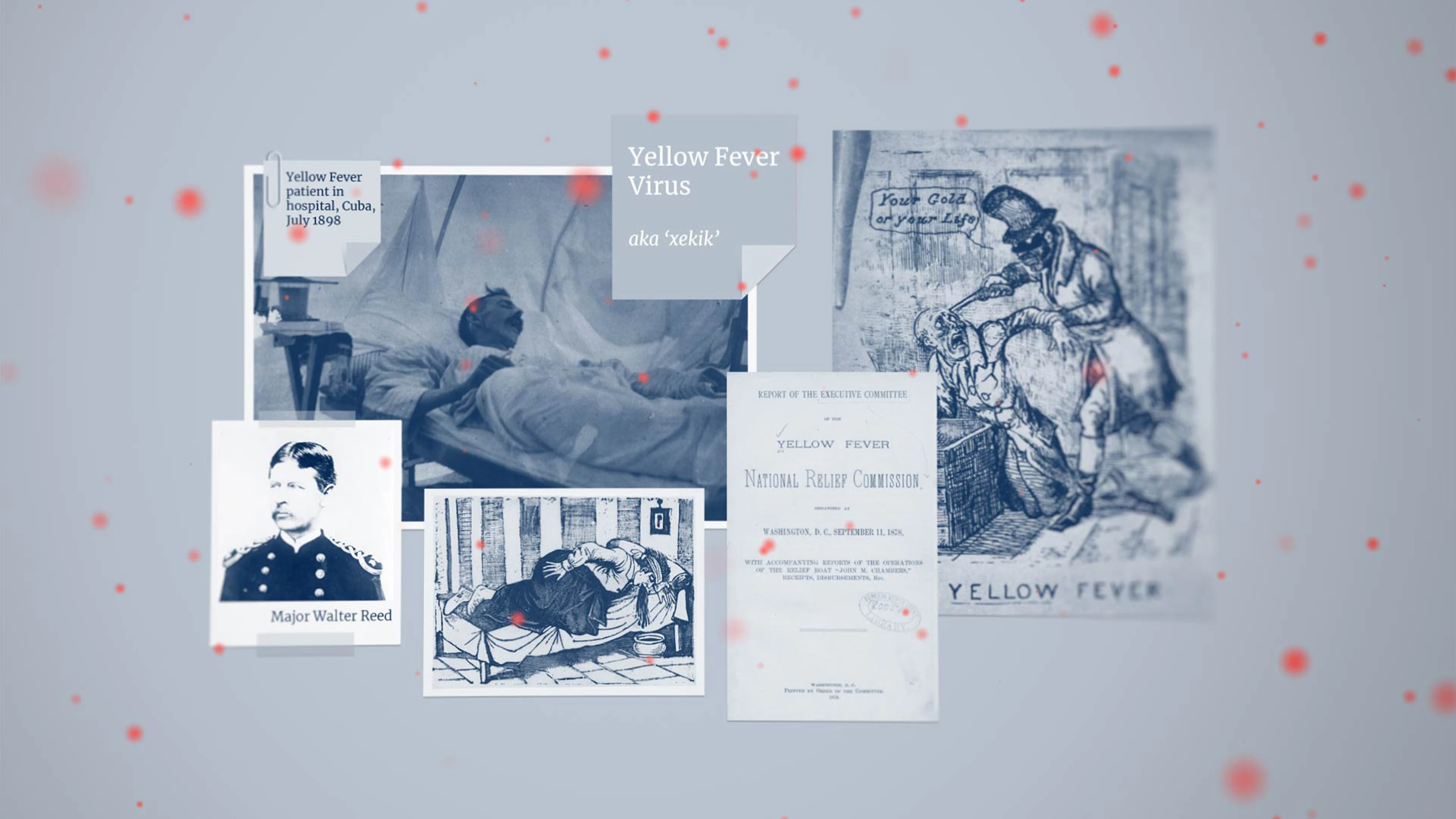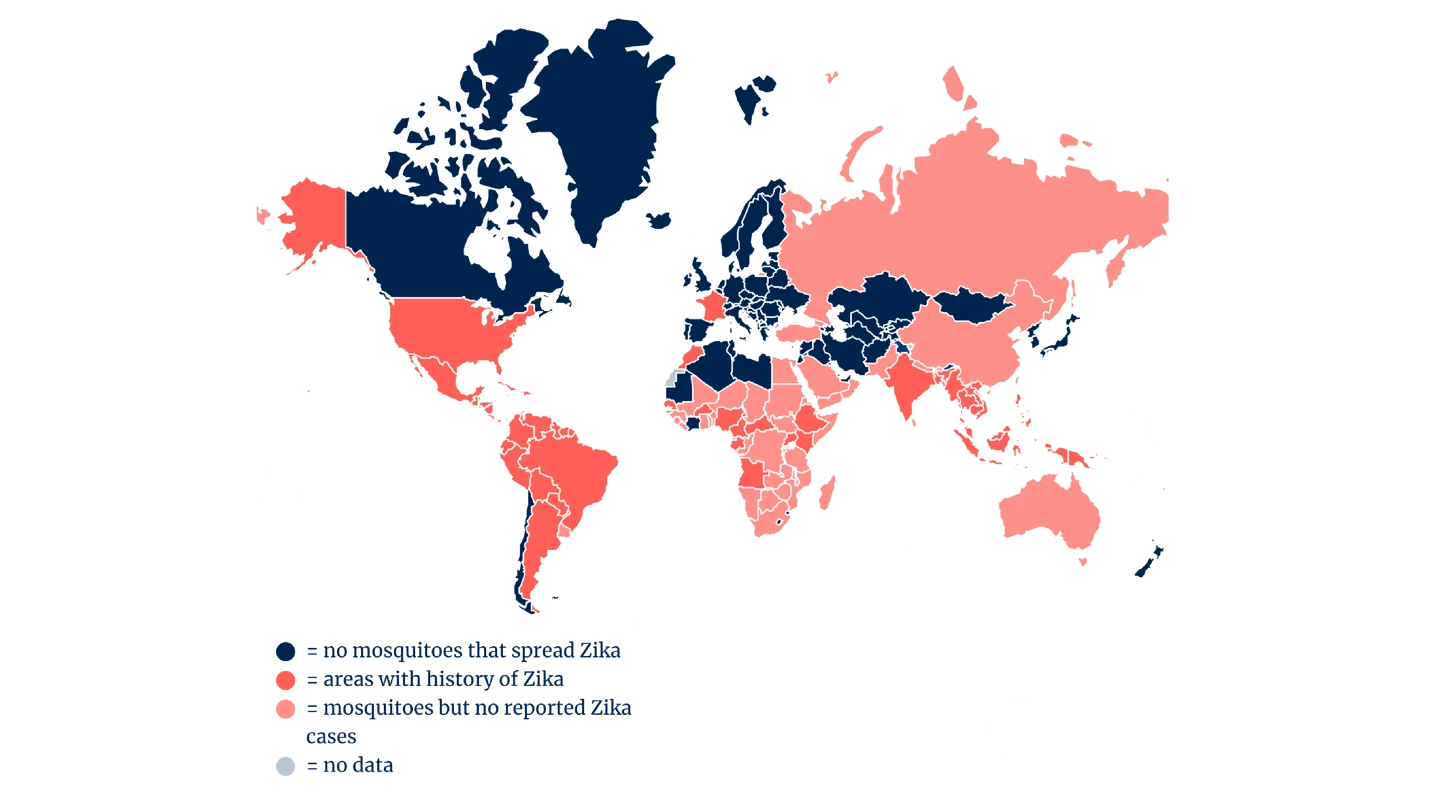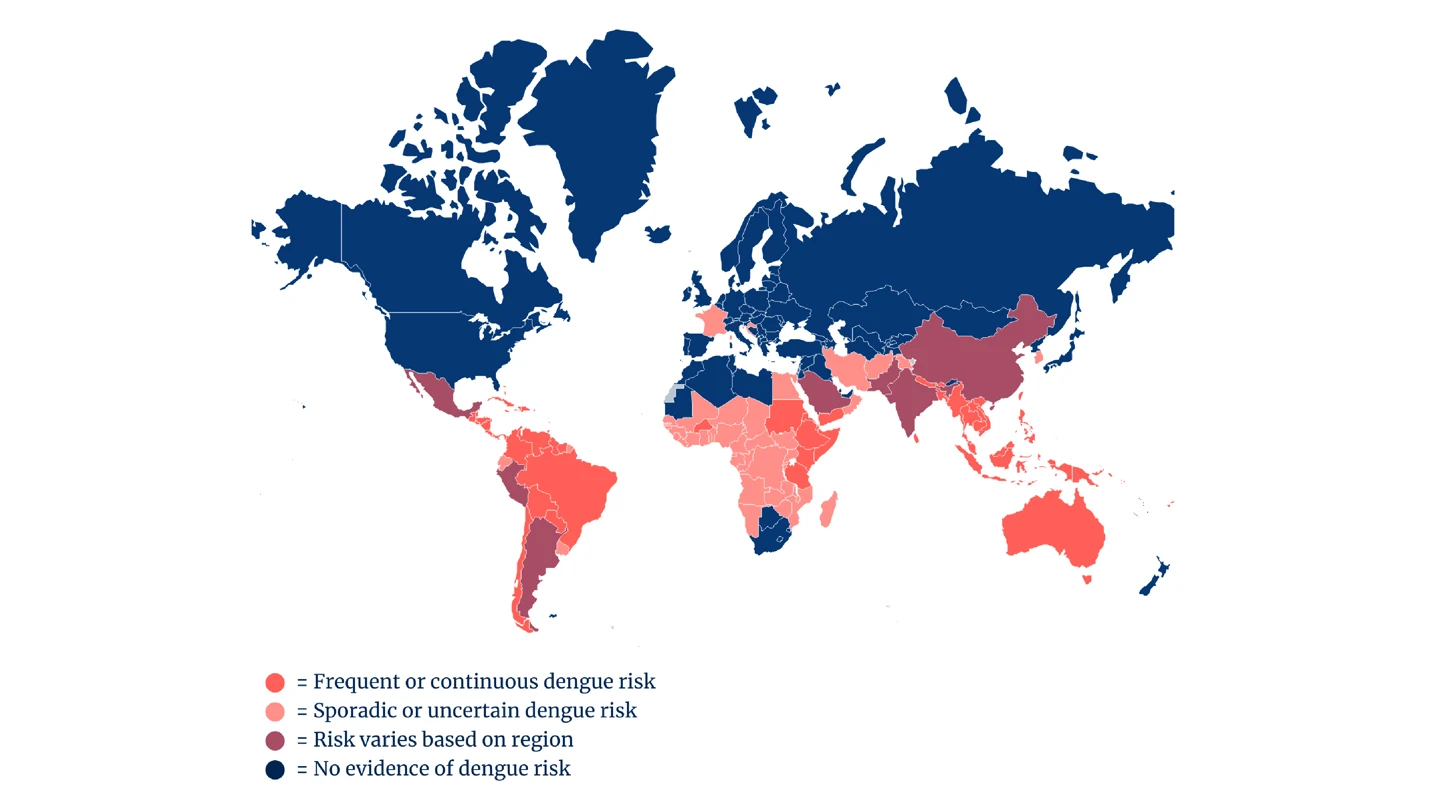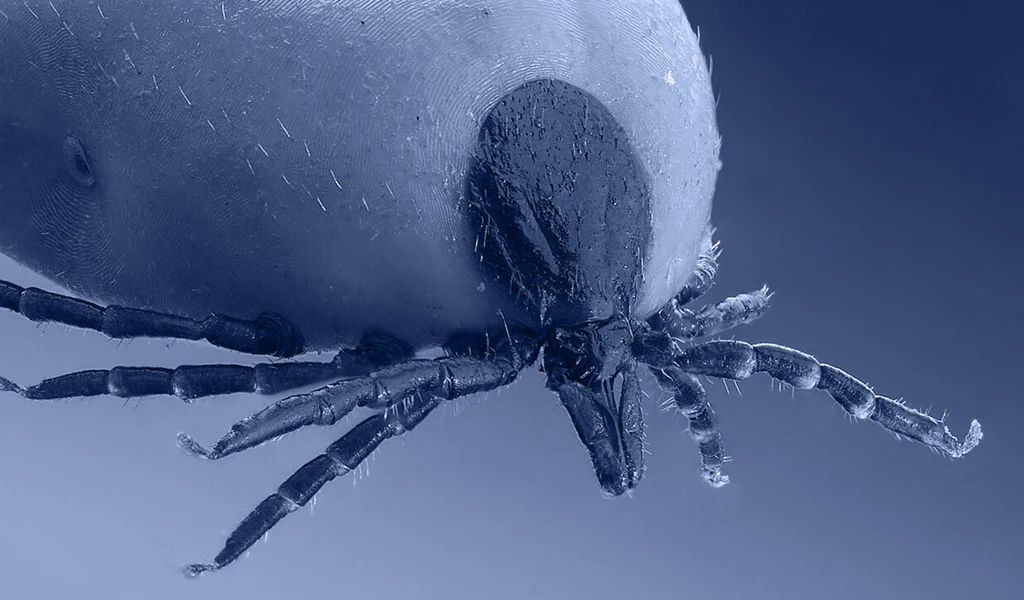The Flaviviruses
When the United States unleashed its army to invade Cuba in 1898 during its war with Spain, hundreds of soldiers on both sides died in battle. Yet many thousands more were killed by a pernicious disease that overwhelmed its victims with fever, internal bleeding, seizures, jaundice and organ failure.
Yellow Fever virus had already plagued the world for a couple of centuries at least – earning a reputation as one of the most dangerous infectious diseases of the 18th and 19th centuries and causing mass casualties in Africa and the Americas. The disease is thought to have emerged first in the rainforests of Africa, then hitched rides on the boats of slave traders, first to the Americas and subsequently into Europe.
But it wasn’t until this acute epidemic killed more soldiers than the rifles and swords they were wielding, that American researchers began to investigate it scientifically. They needed to see how it was spreading and how to stop it. The answers came via the U.S. Military’s Yellow Fever Commission, working in Cuba and led by Major Walter Reed, which proved in 1900 that the disease was transmitted by biting mosquitoes.
Yellow Fever is now known as one of several deadly viral haemorrhagic fevers currently classified as members of the Flavivirus Family, one of The Viral Most Wanted.

One Big Close-Knit Family?
It’s certainly a big family, with 70 known members, and possibly more relatives yet to be discovered.
Prime Suspects
Among the most dangerous and deadly members of the Flavivirus Family are Yellow Fever virus, Dengue virus, Zika virus, West Nile virus, Japanese Encephalitis virus, Tick-Borne Encephalitis virus, Kyasanur Forest virus, Alkhurma virus and Omsk virus.
Hepatitis C is also a Flavivirus and the only one in the family that is not vector-borne, so it stands out from the rest of the family as an exception.
Nicknames and Aliases
The name "Flavivirus" derives from the Latin word "flavus” meaning yellow. This family name underlines the historical significance of the Yellow Fever virus that first gave the Flaviviruses their fearsome reputation. In turn, "Yellow Fever" got its name from the jaundice—a yellowing of the skin and the whites of the eyes—that it can induce in people it infects. In one of the earliest recorded outbreaks of Yellow Fever, in Mexico’s Yucatan Peninsula, the indigenous Mayan people called the disease “xekik”, or "blood vomit”.
The sailor's name for Yellow Fever is “Yellow Jack” which is also the slang name for the quarantine flag in the International Code of Signals - the ‘Q’ flag. It is yellow in colour and denotes that a ship has an infectious disease on board and needs to be quarantined.
The name "Dengue" is believed to have originated from the Swahili phrase “ka-dinga pepo", which describes a sudden, cramp-like seizure caused by an evil spirit. It has also earned itself various other nicknames, including “breakbone fever” because of the severe joint pain it inflicts. In some ancient Chinese medical texts it was referred to as “water poison” and linked to flying insects.
"Zika" takes its name from the Zika Forest in Uganda where the virus was first discovered in a rhesus monkey in 1947, while "West Nile" virus also takes its name from Uganda, where it was first identified in the country’s West Nile region in 1937.
Similarly, Kyasanur Forest virus, Alkhurma virus and Omsk virus all take their names from the geographical locations where they were first identified—in the Kyasanur Forest in the southwest Indian state of Karnataka; in the Alkhumra district, south of Jeddah City, Saudi Arabia, and in the city of Omsk in Siberia, Russia.
Distinguishing Features
Flaviviruses are enveloped single positive-stranded RNA viruses within an icosahedral (20-sided) protein shell. The viral particles are spherical and tiny - at about 50 nanometres in diameter. They are enveloped, or cloaked, in a lipid membrane - a bit like a protective shield.

Modus Operandi
Like other viruses, Flaviviruses enter cells by attaching to specific receptors on cell surfaces. These receptors, which vary widely across the many different members of this viral family, act as gateways - allowing the virus to release its genetic material into the host and hijack the cell’s machinery to begin replicating.
Accomplices
Aedes mosquitoes are the main vectors of many Flaviviruses and are primarily responsible for the spread of viral outbreaks of Dengue, Zika and Yellow Fever.
Mosquitoes are not the only carriers, however. Ticks and other flying insects can also transmit these and other Flaviviruses from person to person and from animals to people. The transmission of the Kyasanur Forest, Alkhurma, Omsk and Tick-Borne Encephalitis viruses, for example, is largely due to ticks, not mosquitoes.
Hepatitis C, the only non-vector-borne member of the Flavivirus family, is transmitted exclusively through direct blood-to-blood contact between humans.
Common Victims
Flaviviruses can infect a wide range of animals and birds, as well as people. For the tick-borne Flaviviruses such as Omsk and Alkhurma, the predominant animal reservoirs are rats, mice and other rodents. For West Nile Virus, several different species of birds are the major reservoir. This means the virus can be carried long distances and across continents as birds migrate.
The main victims of Zika infection are non-human primates such as apes and monkeys, and people. Mosquitoes carry the virus from one host to another, transmitting the disease as they bite. One study in Indonesia found that horses, cows, water buffaloes, goats, ducks and bats can contract Zika, but there is no evidence they spread it to people.
Hepatitis C infection in people causes damage to the liver. The World Health Organization estimated that in 2019, as many as 290,000 people worldwide died from Hepatitis C infection, mostly due to cirrhosis of the liver and liver cancer.

Infamous Outbreaks
Yellow Fever
The first recorded epidemics of the deadly Yellow Fever virus were in 1647 and 1648 on the Caribbean Islands of Barbados and Guadeloupe and in Mexico’s Yucatan Peninsula.
In 1793, a large Yellow Fever epidemic broke out in the American capital and port city of Philadelphia in Pennsylvania. It spread rapidly, eventually killing 5,000 people, or almost 10 percent of the city's population. Many thousands of people, including President George Washington, fled the city to try to protect themselves from the terrifying disease.
Yellow Fever is still endemic in at least 34 countries in Africa and another 13 countries in South America. The disease currently kills an estimated 30,000 people a year, despite being preventable with an affordable, safe and highly-effective vaccine.
A large Yellow Fever outbreak in 2015 to 2017 in Angola spilled over into the neighbouring Democratic Republic of the Congo, infecting almost a thousand people in the two countries and killing more than 130 of them.
Zika
The most notorious Zika epidemic was one that began in Brazil in 2014 and continued to spread through 2016, prompting the World Health Organization to declare a Public Health Emergency of International Concern. The disease infected an estimated 1.5 million people in Brazil, the epicentre of the epidemic, and spread to more than 50 further countries and territories on the American continent.
The WHO’s decision in 2016 to declare Zika a global health emergency came after the emergence of thousands of cases of babies being born with abnormalities, including unusually small head size—a condition known as microcephaly—along with facial distortions, dwarfism, and speech and movement development problems. More than 3,500 babies born with microcephaly were reported in Brazil between October 2015 and January 2016.

Dengue
Dengue is the most rapidly spreading mosquito-borne viral disease globally, with outbreaks becoming more frequent, more deadly and more widespread across diverse regions of the world. In 2017 alone, there were an estimated 100 million cases of Dengue infection across the world, 40,000 of which were fatal.
Dengue is endemic in more than 100 countries, according to the World Health Organization, and has recently spread to new areas including Europe, where it has caused serious outbreaks. Local transmission was reported for the first time in France and Croatia in 2010, and imported cases were detected in three other European countries.

Common Harms
Yellow Fever usually begins with flu-like symptoms such as headache, fever, muscle pain, nausea and vomiting. But around 15 percent of infected patients develop a severe form of the disease that can get into the brain and causes high fever, jaundice and internal bleeding, as well as seizures, shock, organ failure and death. According to information from the U.S. Centres for Disease Prevention and Control, up to half of those who develop severe disease will die.
Japanese Encephalitis and West Nile viruses also target the brain, leading to inflammation of the brain – encephalitis - and potentially life-altering neurological consequences. Most infections are mild and do not progress to severe disease, but about one in four symptomatic cases of Japanese Encephalitis infection are fatal. For West Nile virus, around one in 150 infections progress to encephalitis or meningitis, and the mortality rate for severe cases is between 3 and 15 percent.
The most dangerous feature of Zika virus is its ability to pass from an infected pregnant mother to her unborn child, causing multiple birth defects, including microcephaly.

Lines of Enquiry
Years of disease detective on multiple members of the Flavivirus family have produced some very important breakthroughs—including the development of safe and effective vaccines that protect against Yellow Fever, Japanese Encephalitis and Tick-Borne Encephalitis. A single dose of Yellow Fever vaccine can offer life-long protection from infection. But in the year 2000, there was a global shortage of yellow fever vaccines - largely due to a combination of poor demand forecasting, poor surveillance, and the relatively long time needed to produce vaccines. In 2001, the WHO established a stockpile of millions of doses of Yellow Fever vaccines for emergency outbreak response.
CEPI is advancing the development of several rapid-response vaccine platforms and aims to validate them by using them to create and test vaccine candidates against Japanese Encephalitis.
Despite posing multiple challenges for scientists and vaccine researchers—including safety and efficacy hurdles and the fact that Dengue infection can be caused by any one of four distinct strains of the virus - several Dengue vaccines are in development. The hope is that one or more will soon be authorised as safe and effective enough for widespread use in some of the highest-risk countries.
Progress on developing a vaccine against Zika has faltered, in part due to waning attention as case numbers have fallen significantly in recent years. But there are as many as 10 potential Zika vaccine candidates being explored by vaccine developers around the world, including one currently undergoing early-stage human trials conducted by scientists at Britain’s Universities of Liverpool and Manchester.
One of the crucial lines of enquiry is to be able to develop a Zika vaccine that is safe for pregnant women. If scientists can do that successfully, it could avert some of the most devastating consequences of Zika infection.

Editor's note:
The naming and classification of viruses into various families and sub-families is an ever-evolving and sometimes controversial field of science.
As scientific understanding deepens, viruses currently classified as members of one family may be switched or adopted into another family, or be put into a completely new family of their own.
CEPI’s series on The Viral Most Wanted seeks to reflect the most widespread scientific consensus on viral families and their members, and is cross-referenced with the latest reports by the International Committee on Taxonomy of Viruses (ICTV).




